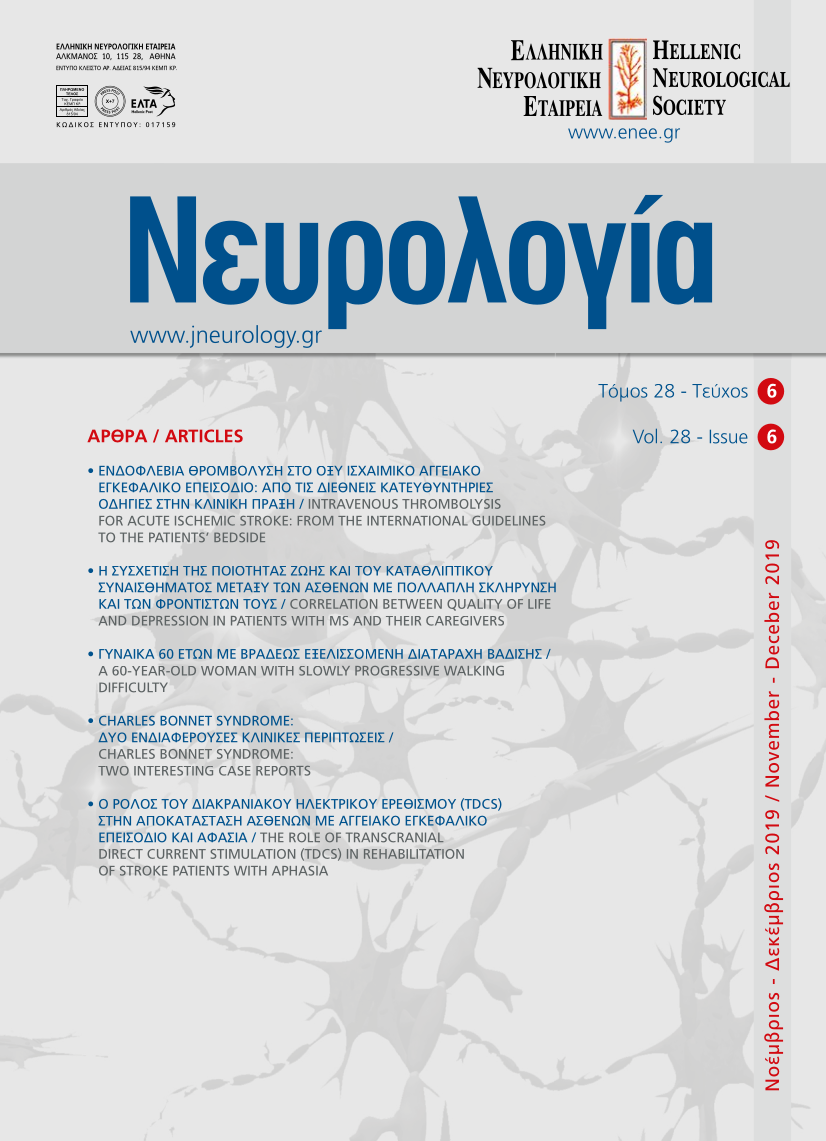AMYOTROPHIC LATERAL SCLEROSIS. A SHORT REVIEW
Keywords:
Amyotrophic Lateral Sclerosis, diagnosis, pathogenesis, Electrophysiological studyAbstract
Amyotrophic lateral Sclerosis (ALS) is a neurodegenerative, incurable disease involving the central and peripheral nervous system. Its incidence is 2:100.000 and its prevalence 8:100.000 subjects. Peak age at onset is 60 years for sporadic and 50 years for familial disease. The etiology and pathogenesis of the disease remain unclear. The main theories, resulting from genetic and pathological studies are glutaminergic excitotoxicity, RNA dysregulation, mitochondrial dysfunction, oxidative stress, inflammation, etc. Mean time from symptoms onset to diagnosis is 9-12 months. Half of the patients die in 2-3 years and only 20% of them survive up to 5-10 years. Electrophysiological study confirms the clinical diagnosis. Other laboratory studies, including cerebrospinal fluid examination and haematological biochemical parameters assessment are indispensable in cases of atypical forms of the disease. The only approved treatment is riluzole, a glutaminergic antagonist, which delays the progression of the disease for 3-16 months.
Training of neurologists and of other medical specialties is indispensable for recognition of the disease in the early stages aiming the early onset of treatment and avoidment of unnecessary medical and inappropriate surgical treatments.


